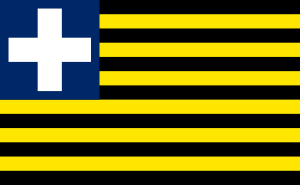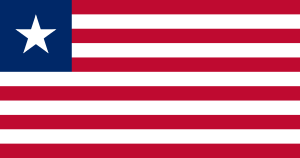Maryland State Colonization Society facts for kids
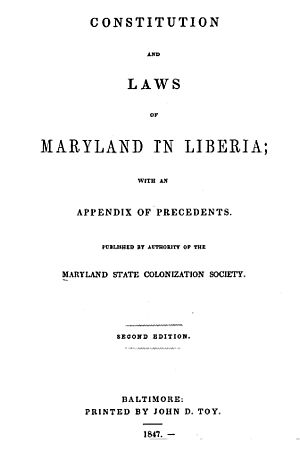
The Maryland State Colonization Society was a group in Maryland that was part of a larger organization called the American Colonization Society. This main group started in 1816. Its goal was to help free African Americans move to Africa. Many people in the Southern United States believed this would give them more freedom. The American Colonization Society helped create the colony of Liberia in 1821–22. This place was meant for freedmen, which means people who were once enslaved but became free.
The Maryland State Colonization Society was important for starting the Republic of Maryland in West Africa. This was a short-lived independent country. In 1857, it became part of Liberia. The society hoped to "be a remedy for slavery." They wanted slavery to end in Maryland with everyone's agreement. Slavery in Maryland finally ended in 1865. This happened after the Union won the American Civil War.
Contents
Starting the Society
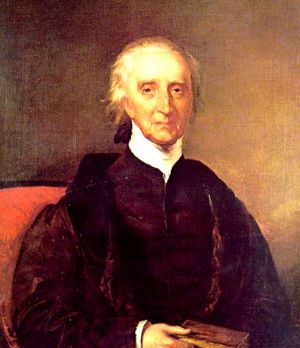
The Maryland Colonization Society began in 1827. Its first president was Charles Carroll of Carrollton. He was a rich landowner from Maryland and owned many enslaved people. Even though he supported ending slavery slowly, he did not free his own enslaved people. He might have worried they would struggle to live on their own. Carroll tried to pass a law in Maryland to end slavery gradually, but it did not succeed.
Many wealthy Maryland landowners were members of this society. The Steuart family was one such group. They owned large properties near the Chesapeake Bay. George H. Steuart, a Major General in the Maryland Militia, was on the board of managers. His father, James Steuart, was a vice-president. His brother, Richard Sprigg Steuart, a doctor, was also on the board.
In 1845, Richard Sprigg Steuart wrote a letter that was published in Baltimore. He shared his thoughts on slavery in Maryland. He believed that Black people should "look to Africa" for hope and happiness. He said that moving to Africa would help many African people leave Maryland over time. The society's president also said that the goal was to create a home in Africa for free Black people from Maryland. They could move there when they saw the benefits or felt pressure to leave the U.S.
From the very beginning, the society aimed to "be a remedy for slavery." In 1833, they stated their belief. They thought that colonization would help end slavery. It would give formerly enslaved people a happier home than in the U.S. This would encourage enslavers to free their enslaved people. They hoped that "slavery would cease in the state by the full consent of those interested."
The society was also started because of fears of slave revolts. For example, Nat Turner's slave rebellion happened in Virginia in 1831. White people in the South were always worried about slave uprisings. The Maryland State Colonization Society was seen as a peaceful way to end slavery.
Republic of Maryland Founded in Africa
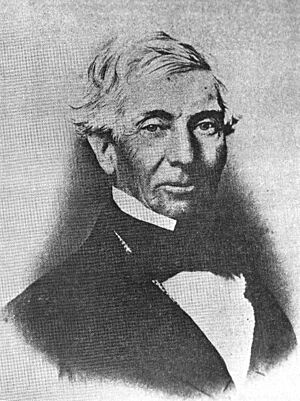
In December 1831, the Maryland state government decided to give US$10,000 each year for 26 years. This money was to transport free Black people and former enslaved people from the United States to Africa. The law allowed up to $20,000 a year, totaling $260,000. This was a lot of money back then. The Maryland State Colonization Society was given the power to carry out this plan. Most of the money went to the colony itself. The goal was to make it appealing for settlers. They offered free travel, housing, and about 5 acres (20,000 square meters) of land for farming. They also offered low-interest loans. These loans would be forgiven if settlers stayed in Liberia. The rest of the money paid agents to tell people about the new colony.
At the same time, new rules were made to make freed enslaved people leave Maryland. They could only stay if a court decided they had "extraordinary good conduct and character." Any enslaver who freed someone had to report it to the authorities. County clerks who did not report could be fined. The Maryland State Colonization Society was created to help enforce these laws.
In 1832, the government added more limits on the freedom of Black people. They could not vote, serve on juries, or hold public jobs. Former enslaved people who were unemployed could be re-enslaved by local sheriffs. Supporters of colonization hoped these rules would make free Black people want to leave the state.
John H. B. Latrobe, who was president of the MSCS for 20 years, believed settlers would be motivated to "better one's condition." He thought that eventually "every free person of color" would be convinced to leave Maryland.
Settling Cape Palmas

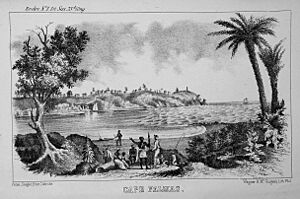
The Maryland State Colonization Society was originally a part of the American Colonization Society. That group founded Liberia in 1822. But the Maryland branch decided to start its own settlement for its emigrants. The first area they settled was Cape Palmas in 1834. This spot was a bit south of the main part of Liberia. Cape Palmas is a small, rocky piece of land connected to the mainland by sand. The Hoffman River is just west of it. About 21 kilometers (13 miles) east, the Cavalla River flows into the sea. This river marks the border between Liberia and Côte d'Ivoire.
Most of the settlers were formerly enslaved African Americans. Many were also freeborn African Americans, mainly from the state of Maryland. The colony was named Maryland In Africa on February 12, 1834. It was also known as Maryland in Liberia.
John Brown Russwurm
In 1836, the colony chose its first Black governor, John Brown Russwurm (1799–1851). He stayed governor until he passed away. Russwurm encouraged African Americans to move to Maryland-in-Africa. He also supported farming and trade there. He had worked as the colonial secretary for the American Colonization Society from 1830 to 1834. He was also the editor of the Liberia Herald newspaper. However, he quit that job in 1835 to protest America's colonization policies.
In 1838, several other African-American settlements on the west coast of Africa joined together. They formed the Commonwealth of Liberia. This group then declared its independence in 1847. But the colony of Maryland in Liberia stayed independent. The Maryland State Colonization Society wanted to keep its control over trade in that area. On February 2, 1841, Maryland-in-Africa became a state. In 1847, the Maryland State Colonization Society published the Constitution and Laws of Maryland in Liberia. These laws were based on the United States Constitution.
Independence and Joining Liberia
On May 29, 1854, the State of Maryland declared itself independent. It was named the Republic of Maryland, or Maryland in Liberia. Its capital city was Harper. It controlled the land along the coast between the Grand Cess and San Pedro Rivers. However, this new country lasted only three years as an independent state.
Soon after, local tribes like the Grebo and the Kru attacked the State of Maryland. They were upset because the colony had stopped the slave trade. Maryland could not defend itself alone. So, it asked Liberia, its stronger neighbor, for help. President Roberts sent military aid. An alliance of Marylanders and Liberian soldiers successfully pushed back the tribesmen. But it was clear that the Republic of Maryland could not survive on its own. On March 18, 1857, Maryland became part of Liberia. From then on, it was known as Maryland County.
Leading up to the Civil War
By the 1850s, fewer people in Maryland believed that colonization was the answer to slavery. Around one in six Maryland families owned enslaved people at this time. But support for slavery was different in various areas. It depended on how important slavery was to the local economy. Marylanders might agree that slavery should be ended. However, making it happen was very difficult. The number of enslaved people stayed high. Slavery was too deeply rooted in Maryland society to be ended willingly. It would only end with war and fighting.
| Census Year |
1790 | 1800 | 1810 | 1820 | 1830 | 1840 | 1850 | 1860 |
|---|---|---|---|---|---|---|---|---|
| All States | 694,207 | 887,612 | 1,130,781 | 1,529,012 | 1,987,428 | 2,482,798 | 3,200,600 | 3,950,546 |
| Maryland | 103,036 | 105,635 | 111,502 | 107,398 | 102,994 | 89,737 | 90,368 | 87,189 |
What Happened Next
The Maryland State Colonization Society did not achieve its main goal of ending slavery in Maryland. However, it did leave a lasting mark in Africa. It helped create the modern country of Liberia. Interestingly, even though Liberia was settled by formerly enslaved people, it continued to be involved in the slave trade. This happened even into the early 1900s. As late as the 1930s, some powerful people in Liberia continued to sell African workers. These workers were sent to Spanish farms on the island of Fernando Po. There, they lived in conditions similar to slavery. So, some of the people who had been freed became involved in trading others.
The American Colonization Society, which the Maryland group was part of, officially closed down in 1964.
See also



